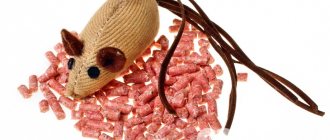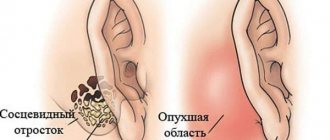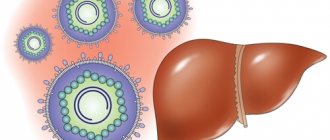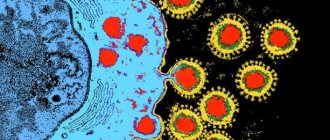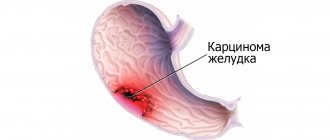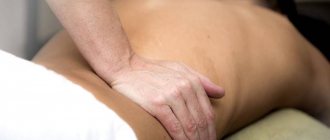How does nut poisoning occur?
Almost all varieties of nuts are high in fat: hazelnuts contain 70%, peanuts contain 49%, and pistachios contain 45%. This environment is ideal for the proliferation of pathogenic bacteria and insects. Due to the fact that the kernels are eaten mainly raw, harmful microorganisms can easily enter the body. This is how infection with intestinal infections and salmonellosis occurs.
Feeling unwell after eating a treat can also be caused by other reasons:
- Pecans, hazels, pistachios, and Brazil nuts are highly allergenic. The reaction is manifested by swelling, skin rash, and urticaria.
- Hazelnuts, almonds, chestnuts, and peanuts are contraindicated for patients with diseases of the cardiovascular system and gastrointestinal tract, and disorders of the central nervous system. Possible manifestations are indigestion, weakness, deterioration in general condition.
- Bitter almonds in their raw form contain a toxic substance - amygdalin. When it enters the digestive tract, it is converted by enzymes into hydrocyanic acid, which causes severe intoxication.
- Peanuts, pine nuts and walnuts often contain aflatoxin, a substance that is a by-product of the Aspergillus mold. In the human body, it causes aflatoxicosis - a dangerous condition that harms almost all internal organs and systems.
If the rules of preparation and storage are not followed, as well as when eating a large number of nuts, the risk of intoxication increases. Often, in order to increase productivity, plants used in agriculture are treated with pesticides; In large warehouses, insecticides are used to protect products from insects. These agrochemicals can also cause nut poisoning.
Symptoms of poisoning
Poisoning with low-quality or stale treats will lead to the entry of pathogenic microbes into the body, and in the future – to the development of toxic infection. It is accompanied by the following symptoms:
- nausea;
- gagging;
- increased temperature;
- cramps in the intestines;
- paleness of the skin;
- headache.
This condition should be distinguished from the malaise caused by eating too many nuts. Overeating affects the functioning of the pancreas and gallbladder. This is not food poisoning, but the symptoms are similar:
- nausea and vomiting;
- bitter taste in the mouth;
- belching;
- abdominal pain;
- diarrhea.
In addition, poisoning from different varieties of nuts may have specific symptoms.
Peanut poisoning
Peanuts are called “groundnuts,” but they actually belong to the legume family. It is consumed both raw and fried, sometimes adding salt and spices. Most natural seasonings are harmless, but there are light snacks on sale that contain synthetic dyes, flavor enhancers, and flavorings. In people with hypersensitivity they may cause an allergic reaction.
Most often, peanut poisoning occurs due to violation of storage rules. As a result, mold forms on the surface, producing aflatoxin. Raw kernels may also be contaminated with E. coli or salmonella. In this case, peanut poisoning, symptoms and treatment of the disease will be standard.
Almond poisoning
Raw almonds pose the greatest danger to humans due to the presence of amygdalin. The toxic substance is destroyed under the influence of high temperatures, so the kernels must be fried or calcined before sale. If this is not done, almond poisoning will cause the following symptoms:
- headache;
- increased salivation;
- nausea;
- vomiting;
- breathing problems;
- abdominal pain;
- weakness;
- tachycardia;
- convulsions;
- loss of consciousness.
Severe intoxication with amygdalin leads to death.
Walnut poisoning
This type of nut is the most common in our country. Walnut trees grow everywhere - in summer cottages, in gardens, and sometimes just along highways. If you collect fruits from a tree that grew in an environmentally polluted area, they will contain lead, cadmium, zinc and other heavy metals. Eating large quantities of such fruits will lead to severe intoxication. Walnut poisoning in this case will manifest itself as general malaise, fever and vomiting.
Green fruits are used for medicinal purposes to prepare healing tinctures, decoctions, and ointments. But people prone to allergic reactions should avoid them.
Nutmeg poisoning
This variety has a special chemical composition - it contains components that cause a psychoactive effect:
- elisticin;
- safrole;
- myristicin.
Their effect is noticeable when a relatively large amount of nutmeg is consumed - 10-50 g, and resembles the effects of using antidepressants. The average weight of a whole fruit is 6 g; For an overdose, it is enough to eat 2-3 pieces.
The first signs of intoxication appear 3–6 hours after eating.
Nutmeg poisoning is accompanied by the following symptoms:
- nausea;
- vomiting;
- pain in the chest and abdomen;
- tremor;
- anxiety.
Subsequently, the victim develops delirium, and states of drowsiness and delirium alternate. Possible flushing of the face, visual disturbances, hypertension and tachycardia. The effects of the poison can be felt for several days. In severe cases, it leads to the death of the patient.
Pine nut poisoning
Pine nut poisoning can be caused by pathogenic bacteria - then the symptoms of illness will be typical. But due to the high fat content in this product, fungi that produce aflatoxin often develop. Poisoning with this poison has a number of specific symptoms:
- yellowing of the skin;
- pain under the right rib;
- bitter taste in the mouth;
- minor hemorrhages on the mucous membranes and skin.
Aflatoxin has a cumulative effect. Even if you eat nuts containing it in small quantities, it gradually poisons the body. A person's metabolism deteriorates, the absorption of fats, vitamins and microelements is impaired. No stool or vomiting is observed: the poison directly affects the liver.
Hazelnut poisoning
Hazelnut is a refined descendant of hazelnut, or hazel. It has a high fat content, so it is not recommended for people with chronic diseases of the gastrointestinal tract and blood vessels. Hazelnut poisoning is manifested by typical symptoms - abdominal pain, nausea, diarrhea.
Poisoning by products of plant origin
- Solanine. A characteristic substance for the nightshade family. Protects plants from fungal diseases and insects. The largest amount is found in unripe fruits. Modern potato varieties have been selected for low solanine content. Do not eat potatoes that have been exposed to direct sunlight. The skin of such tubers becomes green.
- Amygdalin, or vitamin B17, is dangerous in large doses. Contained in the kernels of bitter almonds, peach, cherry, and apricot.
- Cottonseed oil (gossypol). Currently, it is difficult for them to get poisoned. During production, cottonseed oil is purified to a certain safe percentage of the substance content. Gossypol strengthens the immune system by stimulating the production of interferon, kills bacteria, viruses, and cancer cells. But at the same time, it has a specific effect on the human reproductive system and leads to infertility.
Based on its positive aspects, scientists have created medicines. And cottonseed oil, purified from gossypol, is used for deep frying.
- Fasin. Contained in raw beans. If you follow the processing rules (soaking and boiling), beans are completely safe.
First aid
If allergic reactions occur, as well as in case of severe intoxication, calling a doctor is mandatory. Qualified treatment is also necessary if a small child, pregnant woman or elderly person is poisoned. And only in case of mild poisoning can you help the victim yourself:
- Rinse the stomach. The procedure is effective if no more than 6 hours have passed since the meal. Give the victim 2-3 glasses of warm water, then press on the root of the tongue and induce vomiting. Washing is performed several times until the vomit becomes transparent.
- Make you take enterosorbent. This group of drugs absorbs toxic substances and removes them from the body. Among the most common are smecta, polyphepane, and activated carbon. Follow the dosage indicated by the manufacturer in the instructions - it is usually calculated taking into account the patient’s body weight.
- Provide plenty of fluids. This will speed up the cleansing of toxins from the body and prevent dehydration caused by vomiting and diarrhea. Carbonated drinks are undesirable, as they will create additional stress on the digestive tract. The best option is water-salt solutions, clean water and sweetened tea: sugar is an antidote to aflatoxin.
If after all the measures taken no signs of improvement appear, you should consult a doctor. In the infectious diseases department, the cause of the illness will be analyzed and appropriate therapy will be prescribed:
- gastric lavage using a tube;
- hemodialysis and hemosorption - in case of severe intoxication;
- restoration of electrolyte balance;
- administration of an antidote;
- symptomatic treatment - stabilization of heart rate, restoration of breathing, elimination of allergic reactions.
The duration of rehabilitation depends on the patient’s condition. The consequences of mild poisoning disappear on their own within 1–2 days; In case of severe intoxication, recovery will take 1–2 weeks. Until complete recovery, it is recommended to follow a diet that excludes fatty, salty, spicy, fried foods and alcohol.
How to avoid nut poisoning
To avoid unpleasant consequences, follow these recommendations:
- Do not buy products at spontaneous markets, where it is impossible to control compliance with sanitary standards and the quality of goods.
- Store nuts in a dry, dark place at a temperature no higher than 10 degrees.
- Shell any nuts immediately before eating.
- If possible, wash the nuts in warm water and then dry them on a towel.
- Be careful when choosing foods for your daily diet if you are prone to allergies or have any chronic diseases.
- Do not wash down nuts with milk - excess protein foods can cause illness.
- If you detect a sour, bitter odor or taste, mold, or dark spots on the surface, discard the treat.
- Eat kernels in small quantities - no more than a handful per day.
- Bitter almonds can be consumed in limited doses and only after heat treatment. It is used for medicinal purposes, but for a light snack it is better to prefer other varieties.
Contraindications
Excessive consumption of peanuts, like any other product, can lead to negative consequences.
Nevertheless, there are people for whom it is a priori prohibited, this is explained:
- If a person has an ulcer, the coarse fiber in peanuts can irritate the stomach walls;
- Legumes of this group are contraindicated for arthritis and arthrosis, due to the accumulation of salts;
- Individual intolerance to the product;
- Diseases of the liver, kidneys and gall bladder.
What to do with a high temperature due to food poisoning?
Symptoms of nut intoxication
Causes of intoxication with nut kernels:
- binge eating;
- individual intolerance;
- spoiled product.
In case of poisoning, the symptoms are typical regardless of the type of nut eaten.
Excessive use
Payback for not wanting to stop eating kernels in time:
- pain and bloating, gas formation;
- belching with an unpleasant odor;
- bitterness in the mouth, nausea;
- vomit;
- diarrhea.
Note! The recommended amount of kernels for consumption is 30–35 g (1 handful) per day.
Allergy
Redness and rash
Symptoms of individual intolerance (nut kernels are a strong allergen):
- redness, itching of the skin, rash;
- stomatitis;
- inflammation of the mucous membranes;
- swelling;
- lacrimation;
- runny nose, sneezing, cough;
- nausea, vomiting, diarrhea;
- subcutaneous hemorrhages;
- suffocation (Quincke's edema);
- anaphylactic shock (loss of consciousness).
All types of nuts cause allergies.
Toxins and pesticides in fruits
Often, chemicals are used to treat pine nuts - it is possible to quickly and cleanly remove the shells. In other cases, pesticides are used to disinfect pests and extend the shelf life of nuts. As a result of poison entering the body, serious intoxication begins, which is manifested by symptoms:
- nausea, vomiting;
- pain, abdominal pain;
- loose stools;
- swelling;
- change in skin color and mucous membrane;
- muscle weakness;
- confusion;
- decrease in hemoglobin in the blood.
Toxins (aflatoxins) in fruits are formed during improper storage (excessive humidity, heat) and can accumulate in the body. Fruits with mold or an unpleasant (bitter, sour) taste are poisonous.
Signs of aflatoxin poisoning:
- nausea, vomiting, diarrhea;
- dizziness and pain;
- dilated pupils;
- confusion;
- decreased immunity;
- development of liver cancer.
Important! You should not eat nuts that look suspicious. Treatment of the consequences of intoxication will cost more than purchasing young and high-quality nucleoli.
Symptoms of food poisoning
Intoxication of this kind is characterized by a fairly short incubation period - from 2 to 6 hours. It is worth noting that pathology may not develop in all people who consumed the same product, since immunity and susceptibility to pathogenic microflora are purely individual indicators.
Each toxin or type of bacteria has its own clinical picture, however, experts highlight a list of typical symptoms of food poisoning:
- increase in body temperature to 38-39 degrees;
- decreased or complete lack of appetite;
- nausea;
- vomiting, which brings relief;
- excessive sweating;
- increased heart rate;
- stool disorder;
- cramping pain in the abdominal area.
In severe cases of the disease, the appearance of convulsive syndrome, mental disorders such as delusions or hallucinations, a decrease in the volume of urine excreted and impaired consciousness cannot be ruled out.
Types of food poisoning
Modern medicine divides food poisoning into two main groups:
- microbial origin – toxic infections, toxicoses, mixed;
- non-microbial origin, which are caused by poisonous animal tissues and poisonous plants.
Sometimes the cause cannot be determined.
Among the food products that carry a potential danger of poisoning are:
- raw eggs;
- mushrooms;
- fish and meat;
- dairy and fermented milk products;
- homemade marinades and canned goods;
- confectionery products with protein and butter creams;
- catering dishes, the preparation of which violated sanitary standards;
- products with damaged packaging.
Treatment of nut poisoning
Having figured out whether you can be poisoned by walnuts, you need to understand the principles of treatment. If you have a food allergy, the patient should follow a strict diet for several days. It should contain a minimum amount of proteins, fats and sugar, stimulate the functioning of the stomach and intestines.
In case of pesticide poisoning in cashews or peanut allergies, the following medical treatment is provided:
- detoxification by administering saline solution, vitamin supplements,
- injections of Diazolin or Suprastin to relieve swelling,
- stimulation of cardiac or respiratory activity with Atropine,
- liver support with Heparin, Gepabene.
To improve well-being, the patient is injected with a solution of glucose and methylene blue, which neutralizes toxins in almonds. Any antidotes are selected by a toxicologist and require dosage calculation.
Diet after poisoning
On the first day of illness, doctors recommend consuming only liquids. You can drink weak black or green tea, water and rosehip decoction. From the second day it is allowed to include vegetable broth and puree in the diet. Porridge during a diet after poisoning should be prepared only with water. All food should not be too hot or cold. It should be taken in small portions, gradually increasing their volume.
Important! Meals should be fractional - from 6 to 7 times a day. If you follow the recommendations, relief will come by the end of the first day. Then you are allowed to eat a couple of homemade crackers, thin rice porridge or low-fat broth.
If diarrhea persists, it is useful to drink blueberry jelly or a decoction of St. John's wort, as they have an astringent effect.
Nutritionists recommend eating the following dishes after poisoning:
- steamed meat cutlets (from day 3 of the diet);
- casseroles;
- curd puddings;
- steamed fish balls;
- buckwheat and rice porridge with water;
- boiled or baked vegetables;
- dill infusion;
- rice soup;
- homemade crackers;
- steam omelette;
- baked apples and pears;
- chamomile teaNo.
- fruit jelly.
Note! 5-7 days after poisoning, you can add fermented milk products enriched with bifidobacteria to the menu to normalize the intestinal microflora.
In case of poisoning, it is important to strictly observe the drinking regime to prevent dehydration and prevent hypovolemic shock. After each bowel movement and vomiting, you should drink water in small sips. It reduces intoxication and quickly removes accumulated toxic substances.
If you are poisoned, it is strictly forbidden to eat foods that irritate the gastrointestinal mucosa and are difficult to digest. These include:
- canned goods;
- biscuit;
- pies;
- any alcoholic drinks;
- sausages;
- milk;
- milk soup;
- salty fish;
- pearl barley porridge;
- chocolate;
- meat broth;
- salo;
- legumes;
- grilled meat;
- corn;
- fried eggs;
- caviar;
- freshly baked bread;
- raw vegetables and fruits.
These products provoke bloating, increased gas formation, pain in the stomach and excessive production of enzymes, which leads to fermentation in the intestines, so eliminating them from the diet will help the body quickly recover after poisoning.
Food poisoning can be cured quickly and effectively if you follow bed rest, completely abstain from food on the first day, and then follow a strict diet
Benefits of peanuts
Despite the terrible symptoms of poisoning, peanuts, if storage and consumption standards are observed, are a very valuable product. 50% of its composition is vegetable fats. Therefore, a small amount causes saturation for a long time. It contains 12 essential amino acids, including tryptophan, which is involved in the synthesis of serotonin, the hormone of emotional well-being. Eating 100 g of peanuts per day can replenish most of the daily tryptophan requirement.
Groundnuts contain a large amount of vitamins B, C, PP, E. With its help, you can compensate for the lack of macroelements - potassium, phosphorus, iron, magnesium.
What to do if a child is poisoned by chocolate? Signs of intoxication and first aid.
Read what to do if you have food poisoning. Indications for hospitalization.
Find out how to relieve intoxication using medications. Recommendations for performing a cleansing enema: in what situations an enema is not indicated.
Prevention
It is easier to prevent a disease than to deal with its consequences. To avoid peanut poisoning, follow these steps: Storage rules stipulate that peanuts should be kept in a hermetically sealed glass container. If it is in shell, then the shelf life should exceed 9 months, peeled - up to six months. It should be located in a dry, cool place, protected from light.
If various spots are visible on the fruits, or there is a moldy smell, they should not be consumed. Leaky and damaged packaging can allow fungus to penetrate inside. If a common handful contains nuts with traces of mold, the rest should not be eaten either. It is possible that fungal colonies on them are not yet visible to the naked eye. The bitter taste of fresh or roasted peanuts or the taste of rancid oil indicate that the nuts are old or improperly stored. Children under 3 years old are prohibited from giving any types of nuts, because... they lack the enzymes to digest them.
Treatment with folk remedies
There are many home treatments for food poisoning. If poisoning in an adult is not very acute, you can safely use traditional medicine recipes.
- Every 15 minutes after the first signs appear for an hour, take 3-5 g of activated carbon or specially treated clay.
- Every hour for 3 hours, take 1-2 g of vitamin C.
- A decoction of marshmallow root with the addition of honey for oral administration, 1 tablespoon 4 times a day.
- Treatment of poisoning at home is carried out with a decoction of dill with the addition of honey, take half a glass before meals.
- An infusion made from ground ginger should be taken every half hour, a tablespoon.
- Cinnamon infusion is used as a natural sorbent and antispasmodic.
- A decoction of wormwood and yarrow is used to cleanse the body of toxic substances.
- You can stop the proliferation of bacteria by using juice squeezed from three lemons, adding water and sugar. The resulting remedy is drunk in one gulp.
- Mixture for single use, prepared from 150 g of orange juice and raw egg. After this, you need to drink as much water as possible throughout the day.

